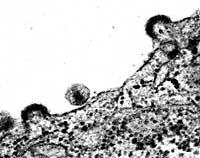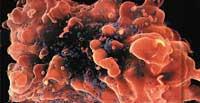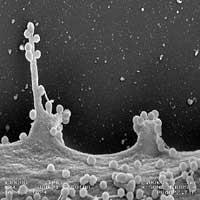Not all are equal for AIDS
2005/02/01 Elhuyar Zientzia Iturria: Elhuyar aldizkaria
HIV infects people more easily than others. After infection, there are people who develop the disease immediately and others who can last the year without signs of disease. Why is there so much difference between each other? This is what researchers have long tried to clarify and now it seems that they have found a response in part.

According to a paper published in the journal Science, the key is in a gene, specifically in the gene CCL3L1. Apparently, to access some cells of the immune system, the virus is associated with a certain protein. The protein encoding this gene adheres to this immune system protein. Therefore, if a large number of ccl3l1-coded proteins occur, HIV can hardly access the cells of the immune system.
In general, we have two copies of each gene, one received from their mother and one from their father, but changes in evolution can cause some population groups to have more copies of a particular gene. Apparently this has occurred with the CCL3L1 gene.
According to researchers, chimpanzees have more copies of this gene than African humans, than Europeans. And they have shown that those who have few copies are easier to infect and that if they become infected they can develop the disease quickly.
The research has opened up the possibility of adapting the anti-AIDS treatment to the genetic characteristics of the patient. Those who become infected and sick easily need harder treatments than others. The research will also help find the vaccine.

Gai honi buruzko eduki gehiago
Elhuyarrek garatutako teknologia






